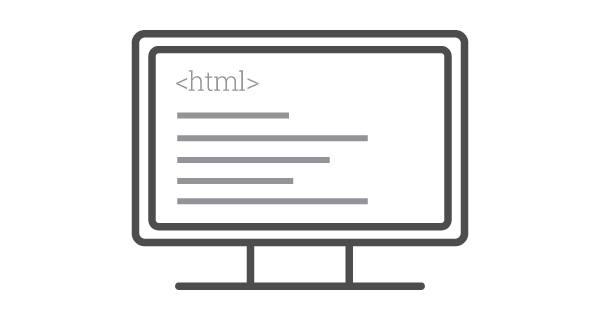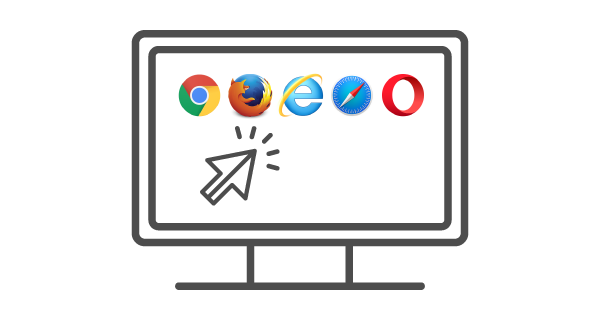Animation brings ideas to life
Designing webpages is an art, not just a job. A passionate designer strives to build appealing interactive elements rather than static fade-in and fade-out designs (if any). Designers are perfectionists. They don’t just want to get the job done as soon as possible. They’d rather try to push the limits of their capabilities and design something that not only impresses their clients, but also satisfies themselves as well. Today, creative professionals can’t limit their minds to just creating functional layouts, they also need to be involved with the UI… and for that, animation is key.
These individuals know that digital marketing is on the rise and it’s only going to get more profitable with every passing day. To stay ahead of the masses, it’s vital to constantly introduce new aspects to your advertising campaigns, such as websites, display banners, and even e-mail marketing initiatives. With the rapid rise in HTML5, CSS3, and different JavaScript libraries, transformations and transitions have paved the way for more interactive, smoother, and more appealing animation elements, which are a must in every modern and enhanced UX/UI.
Our designers in particular prefer to animate HTML5 projects using GSAP (Greensock Animation Platform). GSAP is the most robust free animation library for the modern web with more than 14 years in the market, and is based on a collection of small JavaScript files. GSAP also has some commercial plugins through their member’s club that will save you a lot of time and will make your animations look stunning. In a survey conducted by ihatetomatoes about web animation trends, GSAP is used by 68% of web users. Unlike the case with CSS animations, sequencing is a breeze using GSAP. The platform works with a timeline, which makes it very easy to create, tweak, and adapt from one animation to another.

A brief history of HTML5

72
It was back in 2002 when Sjoerd Visscher made a discovery of unknown magnitude. Though he regarded his own discovery to be “minor,” in truth, it laid the foundation of HTML5.
In 2004, Apple, Mozilla, and Opera founded the WHATWG (Web Hypertext Application Technology Working Group) after realizing the immense benefits HTML5 had, and set out to develop it in a seamless, backward-compatible way rather than replacing it.
By 2007, everyone had eyes on HTML5 and the WHATWG camp couldn’t have been happier since W3C decided to permanently halt their XHTML team and diverted their efforts into developing HTML5.
By September 2011, 34% of the sites with the most traffic had converted to using HTML5 and soon Flash had become entirely outdated. Flash realized this and pulled back support on all mobile devices to focus more on its HTML5 tools. Today, HTML5 is the leading language used for web animations as well as being used by 71.8% of all online sites and growing!
But what happened to flash?
After being the first choice for animated websites and advertising ads for more than a decade, Flash became outdated and received its killing blow when Google made the announcement that their Chrome browser will pause “less important” Flash content as early as September 2015. Amazon even went as far as to discontinue support for Flash ads on their online store. Firefox also stopped support for Flash due to security concerns and its inherent liabilities, which were the cause of many vulnerabilities. Flash is dead now and HTML5 animations keep growing every day.

Why HTML5 animation?

The code is much cleaner
A simple comparison of a regular HTML code and HTML5 code will make it very clear that HTML5 is simpler and uses less lines of code. As mentioned earlier, our designers prefer to combine HTML5 with GSAP, because the full library is hosted on a CDN (content delivery network), which makes it load faster and the code used to animate is minimal. HTML5 is a living language that is continuously being developed and optimized for further innovation and efficiency. Cleaner code directly influences the speed and ranking of a site as well. Remember that Google loves sites that have a less complicated and lighter code, which factors into their quality scores.

Legacy browser support
Another great benefit of HTML5 based code is that it can be used across all browsers both old and new. With the addition of the new doctype, old annoying browsers can finally work well with HTML5. Even old Internet Explorer browsers that couldn’t handle HTML5 tags, can now handle HTML5 elements simply by adding a JavaScript “hack” that will allow them to use the new elements.

CDN support
HTML5 supports the use of CDN through which a library can be shared among as many projects as wanted. When making any HTML5 animation, designers and coders used to spend extensive hours adding the appropriate libraries on a CDN to ensure reliability and performance. To make it easier for the industry, more and more sites like Google DoubleClick (ad publishers/advertisers), are adding some tested and approved libraries onto their CDNs to make the development of web animation faster, perform better, reduce bounce rate by loading quickly, and handle more traffic.

Increases visual appeal
As with any element of a website, animation needs to add to the webpage’s visual appeal as well as contribute to and enhance the overall visitor experience. Additionally, it is ideal to add animation to online creative projects like sites and media banners to increase and retain traffic. When someone visits your site, they will without a doubt pay attention to the animations, causing them to become curious and carefully consider what you offer. The right sort of animation can be included without harming the general idea and purpose of a site. You don’t want to overdo animations since they could easily distract the audience from the site’s content and purpose.

Engages website visitors
Website engagement could easily affect the success of your website and one of the principal tasks of animation is to engage your customer’s journey. It’s been demonstrated that the page bounce rate increases on static sites in comparison to animated ones. Today, animation can catch the consumer’s eye which will help the viewers make their decisions and keep them motivated to navigate through the whole website just based on the curiosity of what’s coming next. Creatives will need to make an appealing approach by adding motion to create emotion, and to inspire visitors to pay attention to your site’s content.
Strive for beyond the ordinary
HTML5 in combination with JavaScript libraries for animation and dynamic elements have by far surpassed whatever Flash was capable of in the last decade. HTML5 animation is far smoother, provides better performance, takes advantage of the CDN features, has a cleaner code, provides legacy support, and has countless more features; but the best part is that it is still growing and advancing every day!
Today, HTML5 has become the first choice of every designer that wants to invent beyond just “getting the job done.” It has become a tool for creative and talented minds to help create truly intriguing digital advertising by bringing ideas to life which, at the end of the day, helps to relate a better story to the consumer. The majority of all brands have made the shift to HTML5 with only a few exceptions. It has become clear that HTML5 animation is not just the present, it is also the future.


